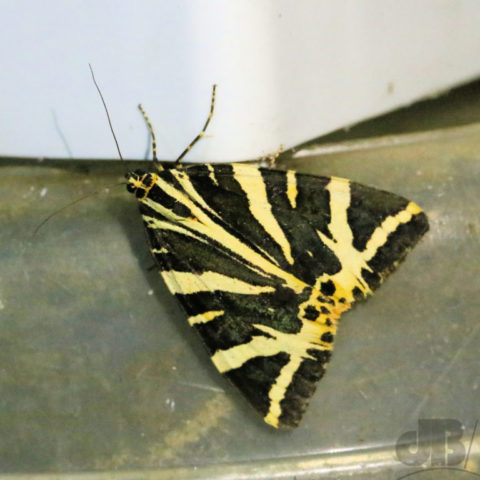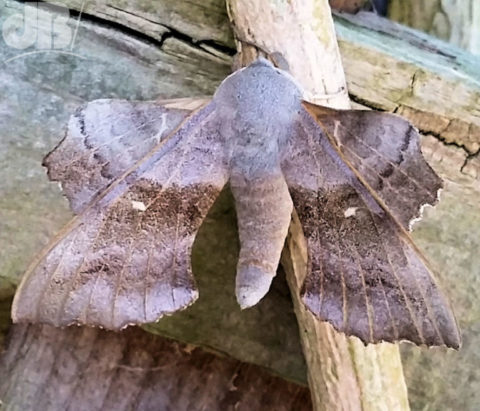First time I looked in an actinic moth trap, we’d landed a Poplar Hawk-moth. A phone camera snapshot is now in the moths section of my fast-growing wildlife gallery here, the one that runs in parallel with the bird gallery. The two nights I’ve had the trap lit in my garden, I’ve caught some nice, small species, but no more Hawk-moths. A highlight of last night, although one that didn’t ever enter the trap, was the Jersey Tiger (Euplagia quadripunctaria).

My moth expert friend Brian Stone, of whom I have spoken in the birding context many times, pointed out that this specimen is probably a migrant given my location (north of Cambridge), although it could be due to range expansion. According to Ian UK moths site: “This species was until recently restricted in distribution to the Channel Islands and parts of the [British] south coast. On the mainland, it is commonest in south Devon, but colonies have recently appeared in Dorset and the Isle of Wight, and it has also been found in other southern counties.”
I asked Brian whether I was likely to see any Hawk-moths, having been disappointed after that initial success with the Poplar.

“During peak periods you will attract them without any difficulty,” he told me. “Poplar are double-brooded so you will get them from now on, Elephant should still be flying and Pine is a bit later and still plenty on the wing now but it is scarcer. With the weather [almost record-breaking prolonged period of hot and dry] we are having you could pull in one of the scarcer migrants like Convolvulus or one of the Hyles species.”
However, normally there would be fewer hawk-moths on the wing by late July. Lime Hawk peak in May/June and hardly any are seen by August. He added that it is possible to check out flight periods on local websites in your area. For me, closest would be Hants Moths. Brian also recalls that in one hot year (specifically, 1st July 2005) he trapped a Bedstraw Hawk-moth in his actinic trap, “a proper rarity”.
There is also the issue of whether one should use a trap on consecutive nights. “I tended not to run consecutive nights,” Brian told me. “You will tend to trap a fair few of the same [individual] moths and they need to get out there and do their thing. Plus you get a lie in.”